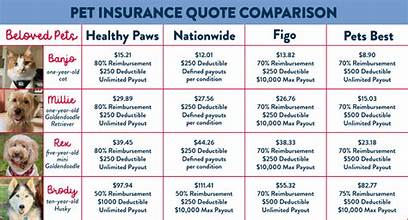Regarding caring for your beloved dog, pet insurance is a topic that often begins a debate among pet owners. While some view it as a lifesaver during medical emergencies, others consider it an unnecessary expense. To help you make an informed decision, let’s look at the pros and cons of pet insurance and offer guidance on selecting a plan that suits your needs.
What Is Pet Insurance?
Pet insurance is like health insurance for humans. It helps cover the costs of veterinary care, ranging from routine checkups to emergency treatments. Depending on the plan, it may reimburse expenses for illnesses, injuries, surgeries, and even wellness care.
Pros of Pet Insurance
1. Financial Security During Emergencies
Veterinary emergencies can cost thousands of dollars. Pet insurance can alleviate the financial burden by reimbursing you for significant expenses, ensuring you can make decisions based on your dog’s needs rather than your wallet, and providing you with peace of mind.

2. Coverage for Chronic and Hereditary Conditions
Some plans cover chronic conditions like diabetes or hereditary illnesses common in certain breeds, such as hip dysplasia in larger dogs. This can provide peace of mind for owners of predisposed breeds.
3. Flexibility in Choosing Providers
Most pet insurance plans may allow you to visit any licensed veterinarian, specialist, or emergency clinic, providing flexibility and convenience.
4. Predictable Budgeting
With a monthly premium, you can better plan your budget for pet care rather than facing unexpected, significant expenses all at once, providing a sense of security.
5. Access to Better Treatment Options
Insurance can make advanced treatments or surgeries, such as cancer therapies, more accessible by offsetting costs, empowering you to provide the best care for your dog.
Cons of Pet Insurance
1. Monthly Premiums Can Add Up
Pet insurance premiums may vary depending on your dog’s breed, age, and health status. Over time, the costs can add up, and if your dog remains healthy, you might feel as though you’re not getting your money’s worth.
2. Exclusions and Waiting Periods
Many plans exclude pre-existing conditions, and there’s usually a waiting period before coverage begins. Which means some health issues won’t be covered.
3. Out-of-Pocket Payments
Most pet insurance works on a reimbursement basis, meaning you must pay the vet upfront and then submit a claim for reimbursement, which could be a challenge if you don’t have the funds available during treatment.

4. Complex Policies
Understanding what is and isn’t covered can be confusing. Some plans might have hidden exclusions or caps on coverage that could limit their value.
How to Choose a Suitable Pet Insurance Plan
1. Assess Your Dog’s Needs
Consider your dog’s age, breed, and health history. Younger dogs may benefit more from comprehensive plans, while older dogs might require plans focused on chronic or hereditary conditions.
2. Understand Coverage Options
Look for plans that cover a range of needs, such as accidents, illnesses, and chronic conditions. Some plans even offer wellness coverage for routine checkups and vaccinations.
3. Compare Costs and Deductibles
Examine the monthly premium, deductible, and reimbursement percentage. A lower premium might come with higher out-of-pocket costs during claims, so find a balance that works for you.

4. Check Exclusions and Caps
Review the policy for exclusions (e.g., pre-existing conditions) and annual or lifetime payout limits. Ensure the plan aligns with your dog’s potential medical needs.
5. Research Providers
Read reviews and ask for recommendations from other pet owners or your veterinarian. A reputable company with assumed customer service can make the process smoother.
Final Thoughts
Pet insurance is not a one-size-fits-all solution. It’s a valuable safety net for some dog owners that ensures top-notch care for their furry friends. Self-funding a savings account for pet expenses might be a better option for others.
Consider your financial situation, your dog’s health, and your willingness to pay for unexpected expenses. The pros and cons of pet insurance will help you make the best decision for your family and your dog’s well-being.




